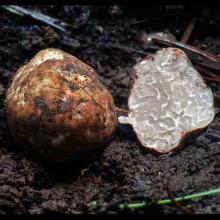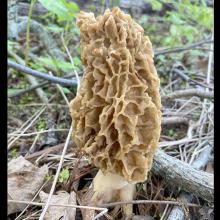Tuber gibbosum
Common name:
Oregon white truffle
Family:
Tuberaceae
Order:
Pezizales
Class:
Pezizomycetes
Morchella esculenta
Common name:
Common morel
Family:
Morchellaceae
Order:
Pezizales
Class:
Pezizomycetes
Tuber gibbosum
Common name:
Oregon white truffle
Family:
Tuberaceae
Order:
Pezizales
Class:
Pezizomycetes
Morchella esculenta
Common name:
Common morel
Family:
Morchellaceae
Order:
Pezizales
Class:
Pezizomycetes
Tuber gibbosum
Common name:
Oregon white truffle
Family:
Tuberaceae
Order:
Pezizales
Class:
Pezizomycetes
Morchella esculenta
Common name:
Common morel
Family:
Morchellaceae
Order:
Pezizales
Class:
Pezizomycetes
Order (Fungi): Pezizales
The Pezizales are an order of the subphylum Pezizomycotina within the phylum Ascomycota. The order contains 16 families, 199 genera, and 1683 species. It contains a number of species of economic importance, such as morels, the black and white truffles, and the desert truffles. The Pezizales can be saprobic, mycorrhizal, or parasitic on plants. Species grow on soil, wood, leaves and dung. Soil-inhabiting species often fruit in habitats with a high pH and low content of organic matter, including disturbed ground. Most species occur in temperate regions or at high elevation. Several members of the Sarcoscyphaceae and Sarcosomataceae are common in tropical regions.
Description
Members of this order are characterized by asci that typically open by rupturing to form a terminal or eccentric lid or operculum. The ascomata are apothecia or are closed structures of various forms derived from apothecia. Apothecia range in size from less than a millimeter to approximately 15 cm, and may be stalked or sessile. The order includes epigeous, semihypogeous to hypogeous (truffles) taxa. The ascospores are single-celled, bipolar symmetrical, and usually bilaterally symmetrical, ranging from roughly spherical to ellipsoidal to occasionally fusoid. The ascospores of some species develop surface ornamentations such as warts, ridges, or spines. The tissues of the ascomata are fleshy and often fragile. Although the majority of species are known only in the teleomorphic state, the anamorphs of some species are known.
Reference: Wikipedia


